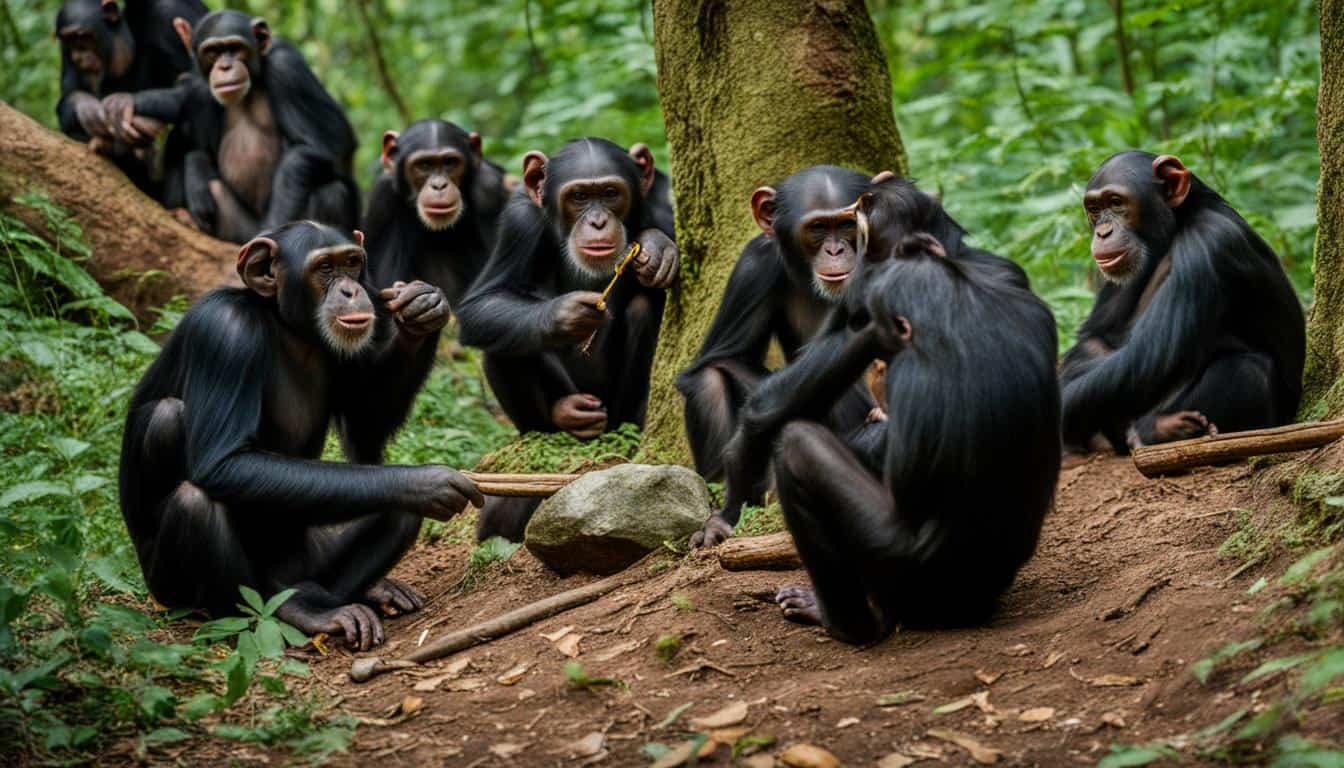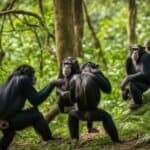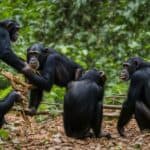Chimpanzees, our closest living relatives, have fascinating social behaviors and forms of communication. In the wild, these intelligent primates engage in a wide range of interactions that help them establish social hierarchies, form bonds, and maintain group cohesion.
Did you know that chimpanzee communication and intelligence enable them to utilize a wide range of gestures, expressions, and vocalizations to navigate their social world? By analyzing their behavior and language, we can gain a deeper understanding of their complex cognitive capacities and how they relate to human communication.
Comparisons with Human Communication
Researchers have discovered fascinating similarities between chimpanzee and human communication. Although chimpanzee communication lacks the complexity and range of human language, chimps effectively use gestures and vocalizations to convey messages, akin to how humans utilize spoken language and body language. Studies have even shown that chimpanzees can learn sign language and use it to communicate with humans and other chimpanzees. These similarities suggest a shared evolutionary history between chimps and humans, shedding light on how human language may have evolved over time.
The Importance of Studying Chimp Interactions
Studying chimp interactions is of paramount importance in gaining a comprehensive understanding of their behavior and intricate social structures. By delving into these interactions, researchers are able to unravel insights into the evolution of social behavior and communication, not just among chimpanzees, but also in humans. Through the study of chimp interactions, a deeper understanding of the complex dynamics present within chimp communities, as well as how they form social bonds, can be achieved. This knowledge, in turn, can not only contribute to conservation efforts but also enhance our understanding of human social behavior and communication.
Understanding chimp behavior starts with comprehending their interactions and the myriad ways they communicate with each other. Chimps possess a remarkable ability to utilize a wide range of gestures, facial expressions, and vocalizations to convey messages within their group. By studying these interactions, researchers can uncover invaluable insights into the social structures of primates, enabling us to gain a more complete picture of our own evolutionary history.
Chimpanzees live in complex social communities that parallel aspects of human societies. They exhibit diverse behaviors such as grooming, playing, and sharing food, which are critical for maintaining social bonds and fostering group cohesion. Investigating chimp interactions allows scientists to analyze the intricacies of social hierarchies, the formation of alliances, and cooperative behaviors among individuals, providing valuable knowledge that can inform conservation strategies and enhance our understanding of human social dynamics.
– Do Chimpanzees Use Grooming as a Social Interaction in the Wild?
In the wild, chimpanzees grooming and hygiene maintenance play a crucial role in their social interactions. Grooming helps them build and maintain relationships within their groups, reduce tension, and reinforce social bonds. It also helps them to remove parasites and keep themselves clean, promoting overall health and well-being.
How does Chimpanzee Communication Affect Their Social Interactions in the Wild?
Chimpanzee communication in the wild plays a crucial role in their social interactions. Through a combination of vocalizations, facial expressions, and body language, chimps convey important information about dominance, food availability, and danger. Effective communication helps maintain social structures and minimize conflicts within their communities.







